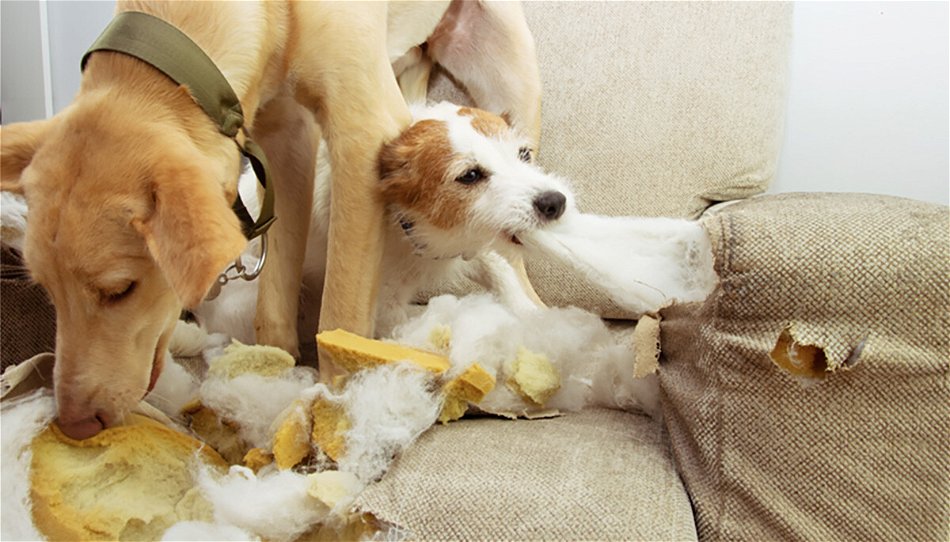Have you ever wondered why your beloved furry friend insists on digging at the couch? Many dog owners, especially those with active breeds like Border Collies and Siberian Huskies, have experienced this common problem. While digging in the yard can be a nuisance, it’s even more frustrating when your dog starts scratching holes in their bed, your favorite couch, or even your own bed. However, understanding the reasons behind this behavior can help you find a solution that works for both you and your furry companion.
Why Does My Dog Dig In Bed?
Typically, when a dog starts digging in furniture, it’s not a sign of disobedience or spite, but rather a natural instinct. Dogs have an innate desire to dig a comfortable hole to sleep in, and furniture often becomes their target for this behavior. The severity of the problem depends on how much your dog scratches and the potential damage to the furniture. A little scratching on a sturdy dog bed is no cause for concern, but when it comes to expensive leather sofas or memory foam mattresses, it can be quite frustrating.
To address this issue effectively, it’s important to look deeper into the root causes of dogs digging in furniture.
1. Natural Instincts
Dogs have a deeply ingrained instinct to dig, which dates back millions of years to their ancestors. They would dig holes to create comfortable sleeping spots. This behavior is still ingrained in their DNA, and they don’t differentiate between a patch of dirt and your expensive Lazy Boy. It’s important to remember that some dog breeds, such as terriers and hunting dogs, are more inclined to dig due to their genetic predisposition.
2. Boredom & Destructive Behavior
What may start as innocent scratching in their sleeping spot can sometimes escalate into destructive behavior. Dogs find ripping and tearing apart objects instinctively satisfying, similar to how they would tear apart prey in the wild. This behavior is particularly common in young and bored dogs, who are looking for ways to keep themselves occupied. So, if you notice your dog tearing apart their bed or your furniture, it’s not because they are being naughty, but rather because it’s a stimulating and fun activity for them.
3. Anxiety & Fear
Stress and anxiety can also trigger dogs to engage in destructive behavior, including scratching and digging on furniture. Dogs with separation anxiety may display various problem behaviors, such as howling, crying, defecating indoors, and scratching furniture. Digging can serve as a displacement behavior, providing an outlet for their intense feelings of fear and frustration.
4. Territorial Behavior
Dogs have scent glands in their paws, and by scratching their sleeping spots, they leave behind their scent as a subtle way of marking territory. While we often associate marking territory with urination, dogs use various methods to leave their scent everywhere. The scent from their paw pads signals to other dogs that the sleeping spot is “theirs.”
5. Nesting Behavior & Maternal Instinct
Pregnant dogs nearing the end of their pregnancy often begin nesting. They may scratch their beds, rip apart blankets, and bedding to create a suitable space for their upcoming puppies. This behavior is instinctive and cannot be prevented, but it’s essential to provide a safe and comfortable whelping box for the mother and her puppies.
6. Looking For Treats And Burying Bones
Dogs may dig in the couch to bury treats or toys they can’t reach or to hide leftover snacks. Their keen sense of smell leads them to search for hidden treasures, sometimes resulting in unintended damage to furniture.
How To Stop A Dog From Scratching Furniture
Understanding the underlying causes of your dog’s behavior is the first step towards finding a solution. Here are some tips to help you redirect and prevent furniture scratching:
- Provide appropriate alternatives: Offer your dog designated digging areas, such as a sandbox or a separate bed filled with soft material, where they can satisfy their digging instinct.
- Mental and physical stimulation: Engage your dog in regular exercise, play sessions, and provide stimulating toys to keep them physically and mentally engaged. A tired dog is less likely to engage in destructive behaviors.
- Positive reinforcement: Reward your dog with treats, praise, and attention when they exhibit appropriate behavior, such as using their designated digging area or staying away from furniture.
- Create a comfortable sleeping area: Ensure your dog’s bed is comfortable and appealing by using soft, cozy bedding and placing it in a quiet and safe location. This can reduce the desire to dig in less suitable places.
- Training and management: Teach your dog basic commands, such as “leave it” and “stay,” to redirect their attention away from furniture. Use positive reinforcement techniques and consistent training to reinforce desired behaviors.
- Consult a professional: If your dog’s scratching behavior persists or becomes compulsive, consider seeking guidance from a professional dog trainer or animal behaviorist who can provide personalized advice and support.
Frequently Asked Questions (FAQs)
Coming soon! Stay tuned for answers to common questions about dogs digging in furniture.
Conclusion
Dogs digging in furniture is a normal behavior rooted in their instincts. However, when it becomes destructive, it’s important to address the underlying causes and find appropriate solutions. By understanding why your dog scratches furniture and implementing positive training techniques, you can redirect their behavior and preserve your furniture. Remember, patience, consistency, and a deep understanding of your furry friend’s needs will go a long way in curbing this behavior.
For more information and expert advice on dog behavior and care, visit Pawsoha.

